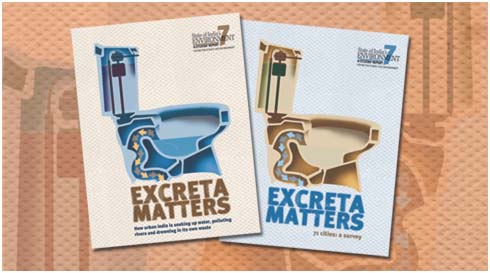Contamination, Pollution and Quality
Fighting water borne disease at the household level
Posted on 16 May, 2012 12:58 PMBeing the second most populous nation in the world with 1.22 billion people, India is all set to take the first position, replacing China by 2030. As per the present population growth rate of 1.58%, India is expected to be a 1.53 billion plus nation by 2030.
Integrated hydrological data book (non-classified river basins) by Central Water Commission, Ministry of Water Resources
Posted on 15 May, 2012 08:37 AMThis data book published by Central Water Commission (CWC) is a compendium of impor
Women and sustainable development - Women’s empowerment is a key factor for achieving sustainable economic growth
Posted on 13 May, 2012 02:50 PMSustainable development depends on an equitable distribution of resources for today and for the future. It cannot be achieved without gender equality. Women’s empowerment is a key factor for achieving sustainable economic growth, social development and environmental sustainability.
Privatisation of urban water supply in Khandwa, Madhya Pradesh - An update from Manthan Adyayan Kendra
Posted on 09 May, 2012 09:53 AMStartling conditionalities
Effects of industrial and agricultural activities on properties of groundwater - A paper published in the Bulletin of Environment, Pharmacology & Life Sciences
Posted on 05 May, 2012 03:24 PMThe main sources of groundwater contamination are industrial, municipal and agricultural wastes (both solid and liquid), rocks, sludge and slimes, refuse, pesticides, herbicides, effluents from livestock and poultry farms. Many pollutants are even able to penetrate into groundwater aquifers.
Fluorosis mitigation in Dhar, Madhya Pradesh: Experiences of monitoring fluoride levels in drinking water and human urine, and implementing mitigation measures
Posted on 04 May, 2012 08:48 AMBackground:
62 million people in India, including 6 million children suffer from fluorosis. The root cause of this is excessive fluoride (>1.5mg/l) in groundwater, as is found in 20 states across India.
Objectives:
"Excreta Matters" - A profile of the water and sewage situation in 71 Indian cities - A report by the Centre for Science and Environment
Posted on 02 May, 2012 12:24 PMGuset post: Amita Bhaduri

Source: Excreta Matters, Centre for Science and Environment, 2012
People in National capital territory of Delhi are far away from safe drinking water: Role of governance and civil society
Posted on 30 Apr, 2012 09:56 PMPhysicochemical assessment of water quality with respect to remote sensing and GIS techniques - Paper published in the journal Advances in Pure and Applied Chemistry
Posted on 30 Apr, 2012 12:43 PMThe paper informs that current techniques normally used in the country for monitoring and assessment of the quality of water bodies involve in situ measurement and/or the collection of water samples for subsequent laboratory analysis of the chemical, physical and biological characteristics of water.
Depleting water resources in Thalassery, Kerala: Huge effort is required to address water supply and sewerage handling issues
Posted on 22 Apr, 2012 02:57 PMAuthor : Fazal Maliyakkal





